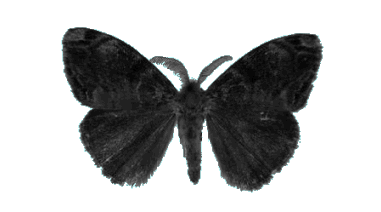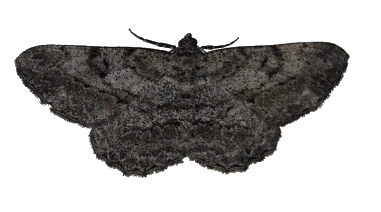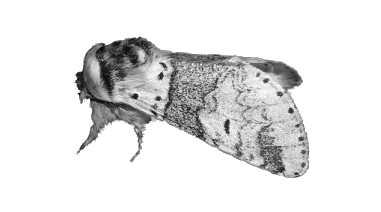Kwik-Key to Common Families of Lepidoptera
Answer for your specimen:
If you have reached this part of the key, your specimen’s front wings should have trifid venation (cubital vein appears to be three-branched). A frenulum should be present and the hind wings should have no more than two anal veins.
The three likely families are:
Erebidae
Tussock moths
Adult tussock moths are usually mottled brown, gray, or white in color. They lack ocelli and have bipectinate (comb-like) antennae in both sexes. Larvae are very hairy and usually have two or three tufts of long hair near each end of the body.

Geometridae
Geometer moths, Inchworm moths
Geometrids usually rest with their wings outspread, pressed flat against the substrate, and with much of the hind wing visible. Both front and hind wings are similar in color and pattern. Markings on front wings follow through onto hind wings.

Notodontidae
Prominents
Prominents usually rest with their wings held tent-like over the body or rolled along the sides to resemble a stick. Most species are drab brown or grayish in color. Many species have a tuft of hair near the base of the wing that tends to project upward at rest.


